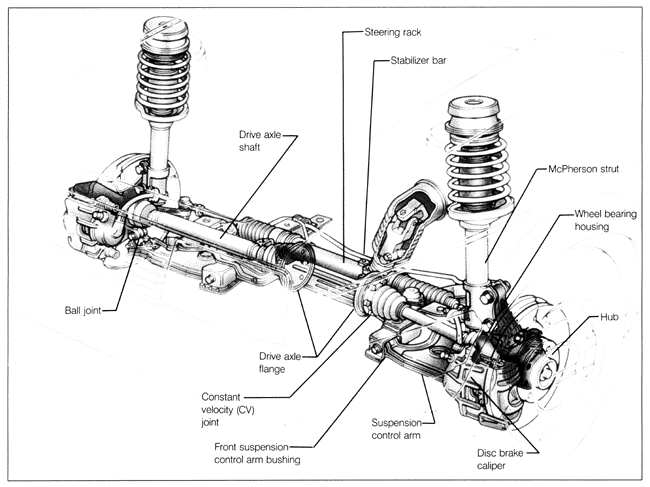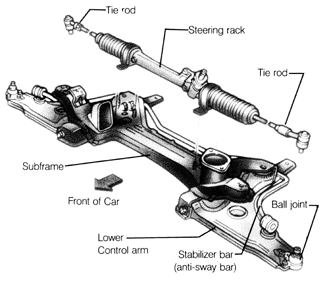1.4 Suspension and SteeringThe suspension and steering systems are what allow the wheels to move independently of the body structure for improved ride, stability, and directional control. In addition, these systems limit and control that movement. The suspension system is the combination of springs, shock absorbers, and other stabilizing devices which separate the wheels from the body structure and support its weight. The springs cushion the effects of bumps. For added control, the suspension system also includes dampers, or shock absorbers, to resist excessive movement of the springs. Volkswagen's strut-type suspension, like that of many modern cars, combines the spring and shock absorber into a single unit, performing the same jobs in less space with fewer individual components. Stabilizer bars aid stability by causing the forces acting on the suspension to be more uniformly distributed. The remainder of the suspension system are the parts that link it all together, designed with bushings, bearings, and joints which purposefully allow or restrict movement. The steering system is an assembly of gearbox mechanism and linkage which translates the rotating motion of the steering wheel into the side-to-side motion of the front wheels. Cars covered by this manual use a rack-and-pinion type of steering mechanism. A pinion gear, connected to the steering column, moves a toothed rack from side to side. The rack can be thought of as a long, straight gear. The entire assembly is also referred to as the steering rack. Power-assisted steering uses hydraulic fluid under pressure to do some of the work normally done by the driver turning the steering wheel. Fig. 1-10, Fig. 1-11, and Fig. 1-12 show the typical compact system of front suspension and steering, and their proximity to other systems in the car. For more information, see SUSPENSION AND STEERING.



|